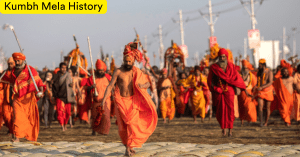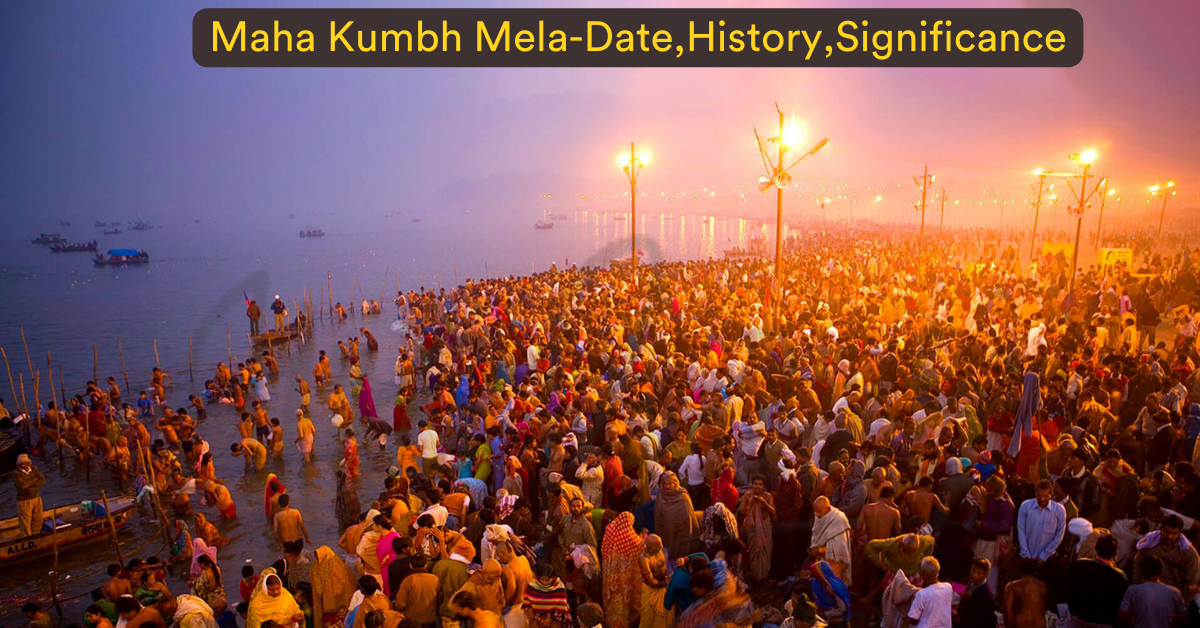Hindu Purana Stories, Indian Festivals
Maha Kumbh Mela 2023 -Dates, Significance, Importance, History, place and imapact.
Bathing in holy rivers or water bodies has been part of Hindu traditions since time immortal. The Hindu scriptures identify seven divine rivers – Ganga, Yamuna, Godavari, Saraswathi, Narmada, Sindhu, and Kaveri, where taking a dip on auspicious days gets rid of sins of the past lives. One of the most splendid and followed confluences is the Kumbh Mela, which occurs every 12 years.
Technically, devotees gather in large numbers to celebrate Kumbh Mela in four places during the span of 12 years. Each city exhibits rich culture, and it is a time to showcase the same apart from being a place for harmonious gatherings, celebrations, and trading.
The Kumbha Mela festivities last for a month to three, depending on the relative astrological positions of Jupiter, the Sun, and the moon as determined by the Luni-solar Hindu calendar.
Prayag and Kumbh Mela
The Kumbh Mela celebration coincides with every revolution of Jupiter or the Bruhaspati around the Sun. This is because Jupiter has a prominent place in astrology, as he is said to bring good fortune and end the testing times. Therefore, offering prayers to Bruhaspati on the auspicious days of the Kumbh Mela gains his favor and helps the devotees receive his bright blessings.
Kumbha Mela celebrations at Prayag coincide with the revolution of Jupiter. On top of it, Prayag is at the confluence of three divine rivers. Both points make it very opportune for devotees to celebrate the Kumbh Mela at Prayag.
Significance of Kumbh Mela
Each place that holds religious significance is an abode of exquisite natural sceneries. Planning a pilgrimage to the places helps you unwind and witness an unmatched spectacle of devotion. The religious gatherings at the celebrations help you identify and set your life on the righteous path.
According to ancient traditions, bathing in the holy rivers and following strict rituals helps you get rid of sins and is one of the significant ways to attain moksha.
Kumbh Mela History

Adi Shankaracharya, the resurrector of the Sanatan Hindu Dharma, started the tradition of Kumbha Mela in and around the 8th century. He identified the places based on their mythological and cultural significance and organized religious debates and preaching for the vast majority.
Mythology
One of the most amazing stories in mythology is the story of Samudra Manthan between devas and asuras to get the pot or kumbh of elixir for immortality.
Devas and asuras, to obtain elixir, started churning the Ksheera Sagar with Serpent King Vasuki as the rope and Mandara Parvat as the churning rod. The churning lasted 1000 years before Lord Dhanwantari appeared before them with the Kumbh containing Amrit. As soon as the pot appeared, devas and asuras started fighting to gain the Amrit. Seeing that devas were losing the fight, Lord Vishnus’ vehicle or Vahana – Garuda snatched the pot. While flying with Kumbh containing Amrit, a few drops from the elixir fell on Haridwar, Prayag, Ujjain, and Nashik. Devotees staunchly believe that the rivers flowing around these places turn into Amrit at auspicious Kumbh Mela dates, giving them a chance to bathe in the essence of purity. Thus, these places are among the holiest of the cities for pilgrimage.
Prayag, being on the banks of the river Saraswathi – a gupatagamini, makes it the prime place of pilgrimage.
Places of Kumbh Mela
The four prominent places where Hindu devotees celebrate the Kumbh Mela are – Haridwar at the bank of the Ganga river, Ujjain on the Shipra, Nashik on the Godavari, and Prayag at the confluence of the Ganga, the Yamuna, and the mythical river Saraswati. Of these, the Kumbh Mela occurring at Prayag is most auspicious, and devotees throng to the place in millions. Haridwar is the second most popular place for devotees.
The major attraction of the Kumbhamela
Kumbh Mela, without a doubt, has great religious importance, but it is also an occasion to celebrate communal trade. The festivities include cultural entertainment, education, charitable events, free meals for saints and monks, fairs, religious talks by saints, and more. The following are the significant attractions of the Kumbh Mela.
- The Sacred Bath
The primary goal of the devotees during the Kumbha Mela is to bathe in the holy waters. Makar Sankranti, Purnima, Amavasya, Basant Panchami, Maghi Purnima, and Maha Shivratri are the auspicious days when bathing in the holy rivers is said to bring good fortune in abundance.
- Donating bedding
Rituals mark Kumbha Mela, and as a part of it, devotees worship the Sun and perform yajnas. To benefit from the heavenly forces, a devotee who has diligently observed all the rituals surrenders their bed and other valuables in a rite known as Shayya Daan.
- Havan
Saints and monks who participate in kumbamela perform yajnas or havan to summon and please deities through religious chantings and offer havis into the fire.
- Arghya
One can see thousands of worshippers offering arghya to the Sun God every morning and seeking blessings from the deity.
- Annadaan
Ardent worshippers provide free meals to saints, monks, and the needy.
- Cultural Fairs and Trade markets
While participating in the festivities, one can witness the grandeur. Each city boasts rich culture and traditions displayed via art forms or selling locally produced goods at fairs.
Magh Snan 2023 Dates
Magh Snan is organized at Prayagraj every year during the month of Magha. The festivities and gatherings resemble the poorna Kumbh Mela; hence, it is also known as the mini Kumbh Mela. The year 2023’s magha snan dates last 45 days, starting on January 6th, 2023, and lasting till February 18th, 2023.
The significant dates for devotees to bathe in the holy confluence to attain moksha are:
- January 6 (Paush Purnima)
- January 15 (Makar Sankranti)
- January 21 (Mauni Amavasya)
- January 26 (Basant Panchami)
- February 5 (Maghi Poornima)
- and February 18 (Maha Shivratri)
The next Maha Kumbha Mela occurs once in 12 years and is due in 2025 in Prayag. So you can start collecting more information on the same, and before you know it, the dates will be here. Meanwhile, you can also benefit from Magha snan, which happens annually.




Jai shree ram ji ki jai shree hanuman ji ki me hu mpi hu se
2022 me kab lgega mela
Kaunsa maheene me padta hain bhai mela
Sort and sweet👍👌🙏
Nice keep it up
Thank You
ॐ नमः शिवाय
जौ मं सारसवाती!
Calling from England & wishing I was at Tribeni Sangam
Surely next maha kumbh will be 2035, with ardha Mela in 2029?
Great, just one complain if we can avoid wirting mythology while discribing our histroy as the word mythology mean “a collection of myths
Thank you so much, stay updated for new blogs
jai khumbh
Jai Maha Kumbh Mela, jai rama.
Jai Sri ram
ॐ नमः शिवाय
जौ मं सारसवाती!
Calling from England & wishing I was at Tribeni Sangam
Surely next maha kumbh will be 2035, with ardha Mela in 2029?